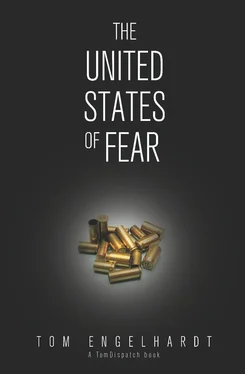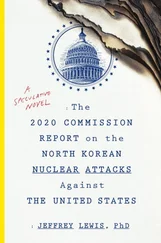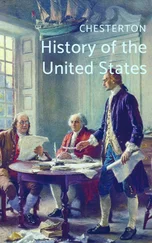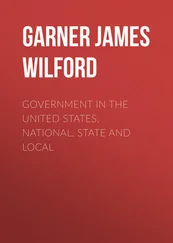And keep in mind that more than two-thirds of the IC’s intelligence programs are controlled by the Pentagon, which also means control over a major chunk of the combined intelligence budget, announced at $80 billion (“2 ½ times the size it was on Sept. 10, 2001,” according to Priest and Arkin), but undoubtedly far larger.
And when it comes to the Pentagon, that’s just a start. Massive expansion in all directions has been its modus operandi since 9/11. Its soaring budget hit about $700 billion for fiscal year 2010 (when you include a war-fighting supplemental bill of $33 billion)—an increase of only 4.7 percent in budget-slashing times—and is projected to hit $726 billion in fiscal year 2011. Chris Hellman of the National Priorities Project crunched the numbers in 2010, however, and found that the full U.S. national security budget was actually more than $1.2 trillion.
Not surprisingly, the Pentagon has taken over a spectrum of previously State Department–controlled civilian activities, ranging from humanitarian relief and development (also known as “nation building”) to actual diplomacy. And don’t forget its growing roles as a domestic-disaster manager and a global arms dealer. You could certainly think of the Pentagon as the blob on the American horizon, and yet, looking around, you might hardly be aware of the ways in which your country continues to be militarized.
With that in mind, let’s examine another warscape, particularly appropriate at a moment when numerous commentators are pointing out how the United States is morphing from a can-do into a can’t-do nation, when the headlines are filled with exploding gas lines and grim reports on the country’s aging infrastructure. Still, don’t think that the old can-do American spirit of my childhood is dead. Quite the contrary, we still have our great building projects, our equivalents of pyramids and ziggurats—and in some cases we even build them near the ruins of actual ziggurats and pyramids. I’m talking about our military bases, especially those being constructed in our war zones.
No sooner had U.S. troops taken Baghdad in April 2003 than the Pentagon and the crony corporations it now can’t go to war without began to pour billions of taxpayer dollars into the construction of well-fortified American towns in Iraq that included multiple bus routes, PXs, fast-food joints, massage parlors, Internet cafés, power plants, water-treatment plants, fire stations, sewage plants, you name it.
Hundreds of military bases, micro to mega, were built in Iraq alone, including the ill-named but enormous Victory Base Complex at the edge of Baghdad International Airport, with at least nine significant sub-bases nestled inside it, and Balad Air Base, which—sooner than you could say “Saddam Hussein’s in captivity”—was handling air traffic on the scale of O’Hare International in Chicago, and bedding down forty thousand inhabitants, including hire-a-gun African cops, civilian defense employees, special ops forces, employees of private contractors, and tons of troops.
And all of this was nothing compared to the feat the Pentagon accomplished in Afghanistan, where the U.S. military now claims to have built four hundred bases of every sort from the smallest combat outposts to monster installations like Bagram Air Base. In a country without normal resources, adequate fuel, or much of anything else, just about all construction materials for those bases and the fuel to go with them had to be delivered over treacherous supply lines thousands of miles long—so treacherous and difficult, in fact, that, by the time a gallon of fuel reaches Afghanistan to keep our Humvees and Mine Resistant Ambush Protected vehicles rolling along, it’s estimated to cost at least $400.
Of course, whatever skills we may lack when it comes to predicting the future, all things must end, including the American war state and our strange state of war. The question is: Can our over-armed global mission be radically downsized before it downsizes us? It will happen anyway and it won’t take forever either, not the way things are going, but it will happen in a less harmful way, if you’re involved, in whatever fashion you choose, in making it so. Had I had a birthday cake with candles on it for that ninth birthday of mine and blew them out, that, I think, would have been my wish.
How the Movies Saved My Life
Every childhood has its own geography and every child is an explorer, as daring as any Peary or Amundsen or Scott. I was the mildest of children, such a picky eater that my parents called me a “quince” (a fruit sour enough, they insisted, to make your face pucker, as mine did when challenged by any food out of the ordinary). I was neither a daredevil nor a chance-taker, and by my teens scorned myself for being so boringly on the straight and narrow. I never raced a car, or mocked a cop, or lit out for the territories.
Still, by the luck of the draw, as a child of the 1950s, I was plunged into a landscape more exotic than most American kids could then have imagined. It was still devastated by war, populated to a startling extent by present and former enemies, and most amazingly, the Germans, Japanese, Italians, and Russians (not to speak of the French and English) I encountered there were thrillingly alive in a way everything in my life told me we Americans weren’t.
Let me explain, geographically speaking and as personally as I can. I grew up at 40 East 58th Street, just off Madison Avenue, in the heart of Manhattan, two blocks from the Plaza Hotel, where Eloise got her hair cut. Apartment 6D—“as in David,” we always said. My parents moved there in 1946, just after World War II. It was two doors down from the Plaza movie theater, and getting to 6D was an exotic affair. You exited a small, gated elevator into a modest-sized corridor, apartments on either side, only to find yourself on a catwalk in the open air looking down on what might have been the low roofs of Paris. A stroll along that catwalk and a right turn into another corridor got you to our rent-controlled duplex with its living-room skylight under which my mother—“New York’s girl caricaturist,” as she was known in the gossip columns of the war years—regularly set up her easel. My room was upstairs.
The fifties are now recalled as a golden age when Americans, white ones anyway, burst into the suburbs, while all the consumerist gratifications deferred by the Great Depression and World War II were sated. It was the age of the television set (“Bigger screen… Brighter picture… Better reception”) and pop-up toasters, of Frigidaires and freezers big enough “for the whole family” (“holds 525 pounds!”) of “extension” phones, wonder of wonders, (“I just couldn’t get along without my kitchen telephone”), and cigarettes so “soothing to the nerves” that doctors and baseball players alike were proud to endorse them.
With good jobs and rising wages in a still war-battered world, the United States stood so much taller than the rest of the planet, manufacturing the large items of the peaceable life (cars, above all) and the advanced weaponry of war, often in the same dominant corporations. It was a world in which Bell Telephone, that purveyor of extension phones, could also run upbeat ads aimed at boys extolling its weapons work. (As one began: “Chip Martin, college reporter, sees a ‘talking brain’ for guided missiles…. ‘Glad to see you, Chip. Understand you want to find out how our Air Force can guide a warhead a quarter of the way around the world. Well, look here… ’”)
Inexpensive gas, cheap well-marbled steaks, and reliable warheads that might end life as we knew it—that seems like a reasonable summary of the obvious in American life in those years. And if you were a kid and wanted more, Hollywood was there to deliver: it was a time when, on screen, the marines always advanced before the movie ended, and the sound of a bugle meant the bluecoats were coming to save the day. It was the moment when, for the first time in history, teenagers had money in their pockets and could begin to spend it on clothes, records, and other entertainment, propelling the country into a new age in which the Mad Men of that era would begin advertising directly to them.
Читать дальше












